Spanish paella is a delicious and flavorful dish in the Valencia region of Spain. It is a rice-based dish typically cooked with saffron, giving it its distinctive yellow color.
Paella can be made with various ingredients, such as chicken, seafood, and vegetables, making it a versatile and customizable dish. Whether you are a seasoned cook or just starting out in the kitchen, making Spanish paella is a great way to explore the flavors of Spain and impress your family and friends with your culinary skills.
We will take you tips through creating a delicious and how to make spanish paella. We’ve covered you, from selecting the right rice and protein to adding the perfect flavourings. Worried about needing a special pan? We’ll address that too.
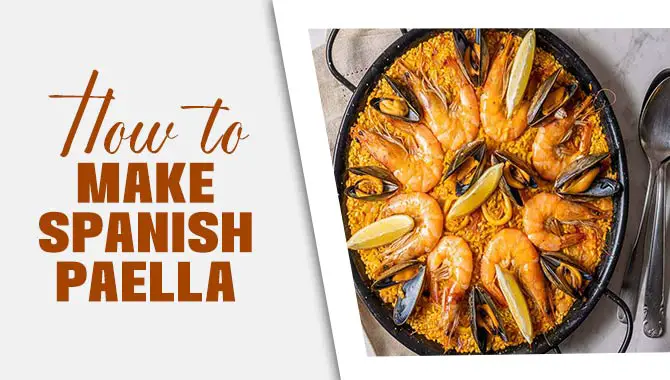
How To Make Spanish Paella: Tips For Recipe
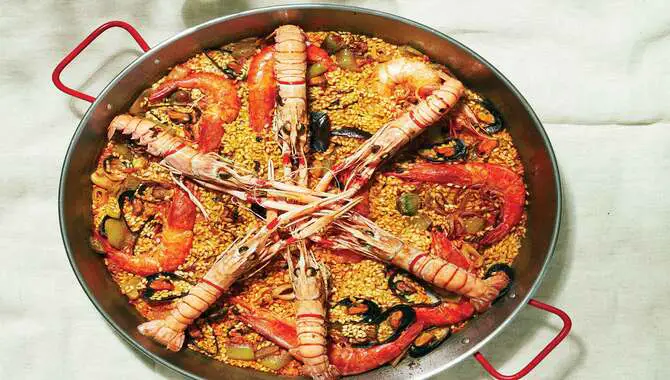
Spanish paella is a delicious and iconic dish from the Valencia region of Spain. It is a rice-based dish typically cooked in a large, shallow pan called a paellera. The key to authentic Spanish paella is using the right ingredients and following traditional cooking techniques.
Making Spanish paella can be a delicious and rewarding culinary adventure. Here are some tips to help you how to make spanish paella. By following these tips, you’ll be well on your way to creating an authentic and delicious Spanish paella that will impress your family and friends.
Select The Right Rice
Selecting the right type of rice is crucial to create an authentic and delightful Spanish paella. The choice of rice greatly influences the texture and flavor of the dish. Regarding paella, turn to short-grain rice for the best results.
Look for varieties like Bomba or Calasparra rice, especially suited for absorbing flavours and liquids without becoming mushy. Long-grain rice is not recommended as it won’t give you the desired consistency. Properly rinse the rice before cooking to remove excess starch and prevent clumping. Following the correct rice-to-liquid ratio mentioned in the recipe will ensure your paella is perfectly cooked.
Get The Right Pan
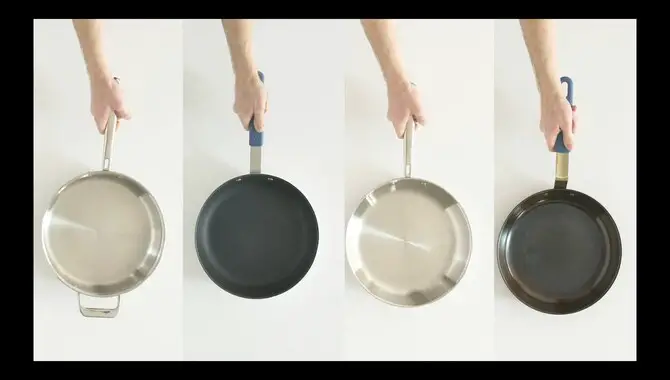
When making authentic Spanish paella, selecting the right pan is crucial. The traditional paella pan, known as a “paellera,” offers the perfect cooking surface. Its wide and shallow design, with a flat bottom, ensures even heat distribution and allows the rice to caramelize, creating the coveted crispy layer called “socarrat.”
Opt for a carbon steel or stainless steel pan, as these materials provide optimal heat conductivity. Avoid using non-stick pans, as they hinder the development of socarrat.
If you don’t have a paella pan, fear not. You can substitute a large skillet or a wide, shallow Dutch oven. Ensure it has enough surface area to accommodate the rice in a single layer. Remember, the right pan is essential for achieving Spanish paella’s authentic flavors and textures.
Choose The Right Protein
Choosing the right protein is a crucial step in making authentic Spanish paella. Traditionally, paella includes a variety of proteins, such as chicken, rabbit, and seafood. The choice of protein can greatly impact the flavor and texture of the dish. If you prefer a meatier option, chicken and rabbit are excellent choices.
They add depth and richness to the paella while maintaining a tender texture. On the other hand, if you’re a seafood lover, opt for shrimp, mussels, and clams to create a deliciously briny and oceanic paella. Whichever protein you choose, make sure it is fresh and of high quality to elevate the overall taste of your Spanish paella.
Add The Right Flavoring
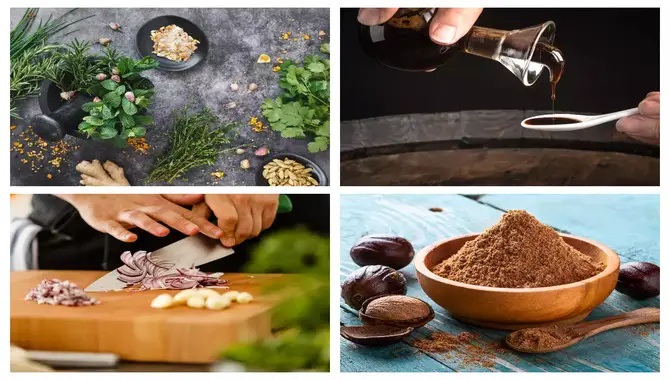
The right flavouring is crucial to making an authentic and delicious Spanish paella. One of the key ingredients in paella is saffron, which gives the dish its distinctive yellow color and rich aroma. To infuse your paella with a burst of flavour, you can also add garlic, paprika, and fresh herbs like parsley or rosemary.
Don’t forget to season with salt and pepper to taste. Combining these flavors will create a tantalizing taste experience that will transport you straight to the streets of Valencia. So go ahead and get creative with your flavorings, but remember to stay true to the essence of this classic Spanish dish.
Prepare The Ingredients
Before you can start cooking Spanish paella, preparing your ingredients properly is important. This includes gathering the necessary ingredients and measuring them according to the recipe. Some key ingredients for traditional paella include rice, saffron, tomatoes, onions, garlic, bell peppers, and various types of meat or seafood.
It’s also important to have a good quality stock or broth to cook the rice in. Once you have all of your ingredients ready, you can move on to the next steps of the recipe and begin creating a delicious and authentic Spanish paella.
Cook The Paella
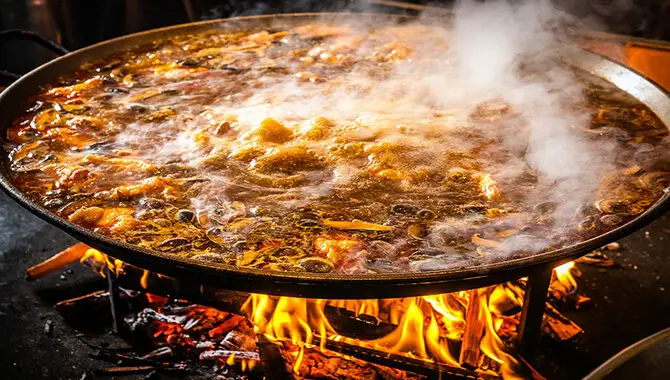
Cooking the paella is the most crucial step in making this traditional Spanish dish. Heat olive oil in a large, shallow paella pan over medium heat. Add onions and garlic, sautéing until they become translucent. Next, add your choice of protein, such as chicken, chorizo, or seafood, and cook until they are browned and cooked.
Once the protein is cooked, add the vegetables like bell peppers and tomatoes, and cook until they soften. Then, pour the rice and stir it well to coat it with all the flavours in the pan. After that, add saffron or paprika for a distinct flavour and color.
Finally, pour in the broth or stock and boil before reducing the heat to low and letting it simmer for about 20 minutes or until the rice is cooked. Remember not to stir the paella once you have added the rice to achieve that coveted crispy layer on the bottom called socarrat. Serve hot, and enjoy your homemade Spanish paella.
Do I Need A Special Pan For Paella?
When making Spanish paella, having the right equipment can make a difference in the final result. While you don’t necessarily need a special pan for paella, using a traditional paella pan can enhance the cooking process and help achieve this beloved dish’s authentic flavors and textures.
Paella pans are typically wide and shallow, allowing for even heat distribution and optimal rice cooking. The wide surface area also encourages the formation of the coveted socarrat, a delicious caramelized rice layer at the pan’s bottom.
However, if you don’t have a paella pan, you can still make a tasty paella using a large skillet or any wide, shallow pan that can accommodate all the ingredients. Just be mindful of adjusting the cooking time and heat to ensure an evenly cooked and flavorful paella.
How To Choose The Right Pan For Spanish Paella
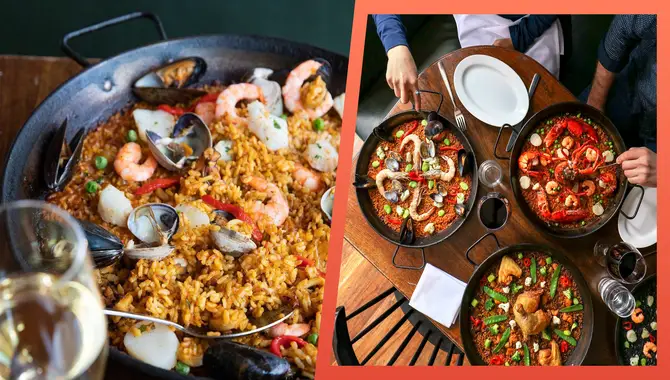
Choosing the right pan is essential when making Spanish paella. Traditional paella pans are wide and shallow, allowing for maximum heat distribution and evaporation of liquids. This helps to create the signature crispy bottom layer of rice, known as “socarrat.”
When choosing a pan, opt for one made of carbon steel or stainless steel, as these materials conduct heat well and are durable. Additionally, ensure the pan has handles that can withstand high heat and are easy to grip. Investing in a good-quality paella pan will enhance the cooking process and ensure you achieve the authentic flavors and textures that make Spanish paella so delicious.
Conclusion
Making Spanish paella is a delicious and enjoyable culinary experience. It may take some practice to perfect the technique and achieve the desired flavors, but with the right ingredients and patience, you can create an authentic and flavorful paella that will impress your family and friends.
Whether you choose to make a traditional seafood paella or experiment with different ingredients, the key is to use high-quality ingredients and follow the traditional cooking methods, but with the right tips and techniques, you can create a delicious dish that will impress your family and friends.
From selecting the right rice to choosing the perfect protein and flavorings, each step plays a crucial role in creating an authentic paella. While you don’t necessarily need a special pan for paella, using a traditional paella pan can enhance the cooking process and produce better results. We hope now you understand how to make spanish paella.
Frequently Asked Questions
What Are The Steps To Making Spanish Paella?
Heat olive oil in a large pan and sauté onions, garlic, and bell peppers to make Spanish paella. Cook your chosen protein until browned. Stir in rice, saffron, spices, and seasonings. Add broth gradually and simmer until rice is cooked. Serve with garnishes like lemon wedges and fresh herbs.
What Is The Difference Between A Traditional Spanish Paella And An Italian One?
Traditional Spanish paella features short-grain rice, saffron, meats, and seafood cooked in a wide, shallow pan. Italian risotto, or paella, uses Arborio or Carnaroli rice, Parmesan cheese, and white wine. The cooking method also differs – layering in a paellera for paella and gradual broth addition for risotto. Both have distinct flavors and techniques, but the key difference lies in the choice of rice and ingredients.
How Do I Make A Basic Paella?
To prepare a basic paella, begin by heating olive oil in a large paella pan and sautéing onions and garlic. Next, add your preferred protein (chicken or seafood) and cook until browned. Stir in vegetables like bell peppers and peas. Then, add rice, broth, saffron, and seasonings. Cook until the rice is tender and has absorbed the liquid.
What Are The Essential Ingredients For Making Authentic Spanish Paella?
To make authentic Spanish paella, you’ll need key ingredients like short-grain rice, saffron, olive oil, garlic, onions, bell peppers, tomatoes, paprika, and proteins like chicken, rabbit, or seafood. Traditional variations may include vegetables. Remember to use high-quality ingredients for the best flavor.
What Are Some Common Mistakes To Avoid When Making Paella?
Avoid using the wrong rice variety to make a delicious paella, as it can impact the dish’s texture and taste. Don’t overcrowd the pan with ingredients to ensure even cooking. Once you add the rice, refrain from excessive stirring to prevent stickiness. Lastly, allow the paella to rest for a few minutes before serving for flavors to blend harmoniously.

I’m a writer and blogger who loves to talk about entertainment, culture, and relationships. I love to share my thoughts and insights on these topics, and I’m always looking for new ways to engage with my readers. I’m also a big fan of learning new things, so I’m always exploring new areas of interest.





